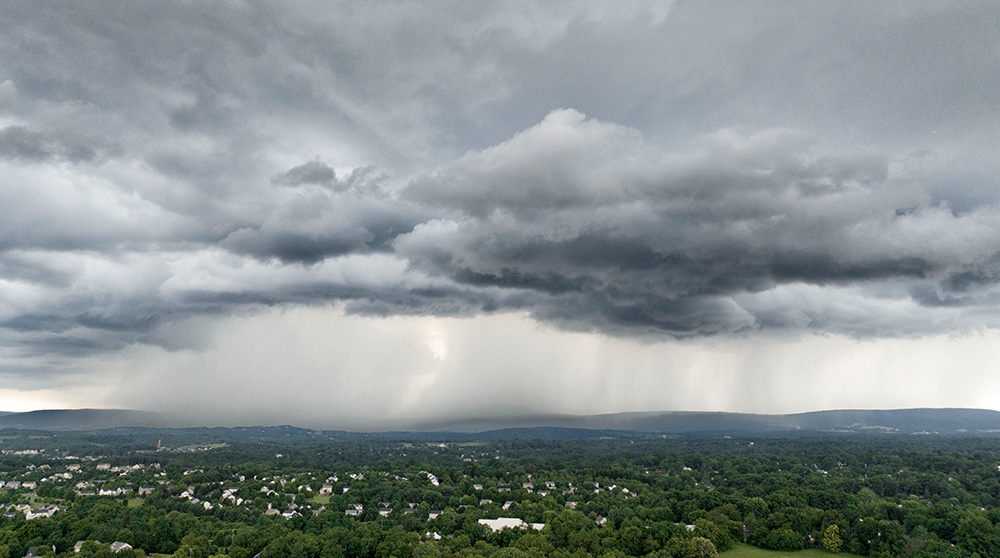Storm preparedness tips to protect your home and business.

From heavy rain to hurricanes, tornadoes to snow and ice, weather events across the globe are leading to greater damage, claims, and loss. In the U.S. alone, economic and insured losses from natural disasters in 2022 were substantially above the long-term means and estimated at $165 billion, according to AON in their 2023 Weather, Climate, and Catastrophe Insight report.
With similar systems on the horizon, it’s imperative to follow storm preparedness precautions for both your home and business. Is your region affected by one or more of these severe weather events? If so, be prepared with the following tips.
Tornadoes
Tornadoes can strike with little warning, leaving devastating effects in their wake. Being prepared to take quick action can make all the difference.
Remember the difference between a tornado watch (which signifies a tornado is possible) and a tornado warning (which signifies a tornado is occurring or will occur soon).
Know where the safe zones are in your home and business, should you need to take shelter. Your family and colleagues should know those zones, too. Practice drills to get everyone up to speed and familiar with the plan.
Have emergency supplies in case you lose power or need to stay sheltered. This includes a crank radio to access weather alerts, water, food, flashlights, cell phone chargers, medical supplies, and more.
Read “How to prepare for a tornado: 5 tips to stay safe in the storm.”
Hail
Hailstorms can wreak havoc on vehicles, roofs, crops, businesses, and more, causing significant financial loss. Learn how to minimize damage with these storm preparedness tips:
Park your car in a garage or carport when hail is on the way. If you live in a city, see if you can move your vehicle into a parking garage to weather the storm.
If you live in an area that experiences frequent hail, consider hail-resistant roofing that is made of more durable metal.
Use landscaping to your advantage if hail is a common threat. Planting trees around your home or business can add protection from hail damage. Just make sure they’re trimmed back so they don’t cause further harm.
Keep loved ones (and pets) indoors during severe hailstorms and offer shelter to customers. If you’re in your vehicle, pull to the side of the road or under a covering, if possible, until the system passes.
Hurricanes
These powerful storms can cause widespread damage from high winds, heavy rainfall, and storm surges. That’s why it’s crucial to have a hurricane preparedness plan in place before the season starts.
Snow and Ice
Snow and ice storms can disrupt daily life by blanketing roads and sidewalks, causing power outages, and creating hazardous travel conditions. See the steps below to safely navigate these conditions at home and work.
Have a snow blower, shovel, and winter-appropriate gear (like heavy boots) on hand to safely remove snow. Follow these snow blower safety tips.
Learn about snow and ice dams to prevent damage to your property.
Turn the heat up at home and open cabinets to help stop pipes from freezing.
Avoid travel on the roads, if possible. See if you can work from home or leave work early to commute during the daylight. If you must be on the roads, give yourself plenty of space between your car and the car in front of you, clear your headlights and taillights of snow accumulation, and follow these safety tips for driving in the snow.
Find out how black ice forms and how to drive more safely on it.
Work in construction? Keep up with current forecasts to know when to add heating to the site or send crews home for safety.
Thunderstorms
Thunderstorms are common during the warmer months and can bring lightning, heavy rain, strong winds, and even tornadoes. Stay informed about approaching storms by monitoring weather forecasts and alerts closely during favorable conditions.
Move customers or family members indoors as soon as thunder rumbles.
Keep a generator and extra fuel on hand in case of a power outage.
If you’re in a backyard pool or community pool, get out of the water immediately if a thunderstorm is approaching and relocate to an indoor area away from water.
Secure outdoor items in your business or yard. This could include stacking or locking down café tables and chairs, securing outdoor grills, and stowing lawn equipment.
Wind
Windstorms can cause trees to topple, power lines to fall, and property damage to occur. Be ready for wind with these storm preparedness tips:
Prepare for high winds by securing loose outdoor items.
Trim tree branches near your home or business so they don’t hit or fall on your structure.
Reinforce windows and doors to increase energy efficiency, preserve heat, and protect against heavy gusts.
Consider changing out your shingles with options that have higher impact ratings and can help reduce the effects of storm damage.
Move your vehicle to a garage or covered area to avoid damage from high winds or thrown objects.
Rain
Heavy rainstorms can lead to flash flooding, landslides, and property damage. Learn how to protect your home and business now.
Storm preparedness is key to safety and protection. What else is key? Getting the right coverage. Talk to a local, independent agent to ensure your home and business are protected from any weather to come.
This content was developed for general informational purposes only. While we strive to keep the information relevant and up to date, we make no guarantees or warranties regarding the completeness, accuracy, or reliability of the information, products, services, or graphics contained within the blog. The blog content is not intended to serve as professional or expert advice for your insurance needs. Contact your local, independent insurance agent for coverage advice and policy services.







